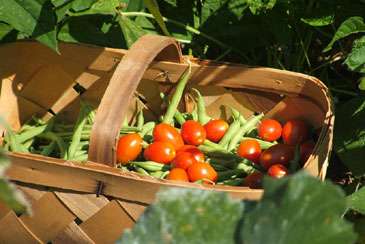Landscaping with a Green Thumb: The Vegetable Garden

In this article, you will find:
Deciding what to grow
Choosing Your CropsBefore you can choose which crops to plant, you need to know your local frost dates, as well as the kinds and varieties of vegetables that grow well in your area. Once you know how soon you can plant and how long your growing season is, think about which vegetables taste best fresh from the garden. Tomatoes, peas, lettuce, young carrots, and green beans are just a few you might want to try. Mature onions, potatoes, and winter squash keep well and are relatively cheap in the supermarket, so you may as well concentrate on growing other, more perishable types of vegetables. Cold-resistant vegetables, such as spinach, lettuce, and many kinds of peas, can be planted early and late in the season, giving you successive crops. Warm-weather crops like tomatoes, melons, and eggplant must wait for consistent temperatures and warmer soil.
Once you've decided what you'd like to grow, draw a small scale model of your raised beds, and decide where the vegetables will go. Remember that intensive gardening calls for interplanting—planting different types of vegetables, herbs, and even flowers in the same bed—which helps to keep insect and disease problems under control. It has long been known that certain plants grow better when planted next to one another (for example, basil and tomatoes); you can easily research "companion planting" for the crops you have in mind. The distance recommended on a seed packet for plants in rows is the distance from the center of one plant to the center of the next. This close spacing is an efficient use of space that shades the soil and leaves less area to weed and mulch. Avoid shading short, sun-loving plants by planting taller plants on the north side of the garden. On the other hand, loose-leaf lettuces and other sun-sensitive plants will appreciate a bit of shade during the hotter months.
If your budget is tight, take the economical approach and start your plants from seeds. You can get a head start on the growing season by planting seeds indoors in flats or peat pellets, if you have enough room and light. The instructions on the seed packets will help you determine how soon to get the seeds going. Plant more seeds than you will need, to adjust for loss. If you're willing to spend some money, buy seedlings from your local nursery or garden center. You can find a wide variety of ready-to-plant vegetable and herb seedlings.

